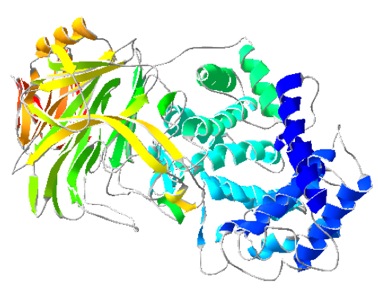Sometimes, cosmetic procedures don’t turn out the way we plan. Sometimes, even Restylane goes wrong. Cosmetic injections and dermal fillers that use hyaluronic acid are considered minimally invasive. They are a way to improve our physical appearance with low cost and minimal risk. All fillers have a slightly different shelf life before they are absorbed or broken down by the body. For Restylane, that time is anywhere from 3 to 9 months. Fortunately you don’t have to wait that long to recover when Restylane goes wrong. Hyaluronidase might be able to correct the problem
Possible Ways Restylane Goes Wrong
Hyaluronic acid fillers generally provide safe and effective cosmetic augmentation. But in the event that you trust a novice practitioner, there may be too much filler used. It may be injected in the wrong place. Or the practitioner may not know how to mold it properly under the skin, once it’s injected.
Restylane goes wrong most often due to the formation of bumps. It is common for a treatment to result in swelling and or bruising. This reaction from the body can last as long as two weeks. Once it subsides, the injection site should be smooth and lifted, with increased tissue volume and skin firmness.
Though it is infrequent, Restylane can clump up and cause a bumpy appearance on the skin, which make for an unsmooth or uneven appearance. It can even result in asymmetry depending on the volume of the injection.
How To Avoid Bumps from Restylane
Using an experienced practitioner is the key to having a successful treatment. Be sure you pick someone with the proper board certification who has an excellent understanding of facial anatomy. Restylane is the oldest hyaluronic acid filler, but it also has the thickest consistency. This means it does not “run” once injected, like Juvederm might do. There are pros and cons to the dense consistency of Restylane. One advantage is that it gives experienced doctors more control over the final result, because they can mold the filler into the shape desired.
In the event of an inexperienced injector, it is typically a disadvantage that this filler is not thin enough to spread out on its own. That’s why it is so important to make sure your doctor is not only experienced with HA fillers, but with Restylane in particular. Generally, Restylane goes wrong in the care of a novice doctor.
Hyluronidase Used When Restylane Goes Wrong
Hyaluronidase is a type of enzyme that breaks down hyaluronic acid, which is a sugar found in our connective tissue. The enzyme lowers the viscosity of this bodily sugar to increase tissue permeability. In medicine, hyaluronidase is often used in conjunction with pharmaceuticals. This expedites the dispersion and absorption of the needed drug into the body.
In the cosmetic industry, hyaluronidase can be used at the injection site of an HA filler. So if Restylane goes wrong, this antidote will break it down at an accelerated rate. That way you don’t have to live with an unwanted appearance for up to 9 months.
Hyaluronidase can be used immediately following an injection with hyaluronic acid. There is no necessary waiting time to safely dissolve an unwanted filler. However, it is advised that the patient wait for the injection site to heal and stabilize. It can take a few weeks for the swelling to subside, before the final result of an HA treatment is fully visible.

